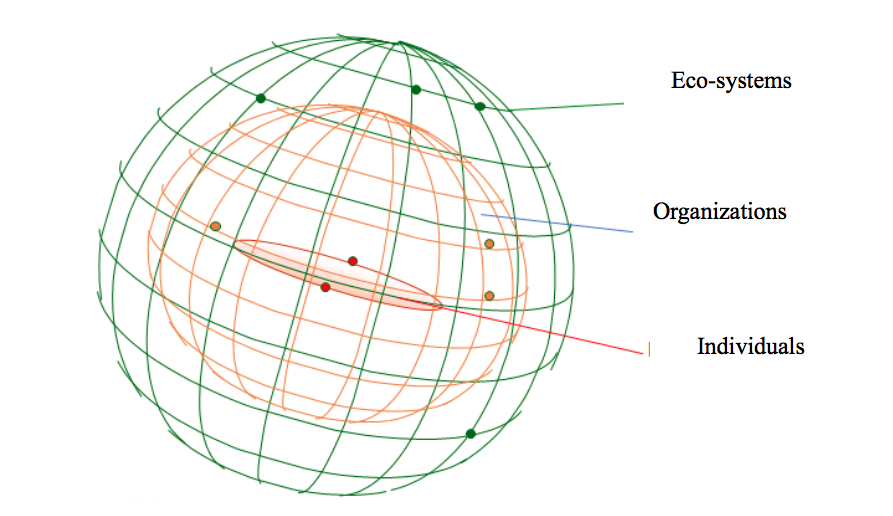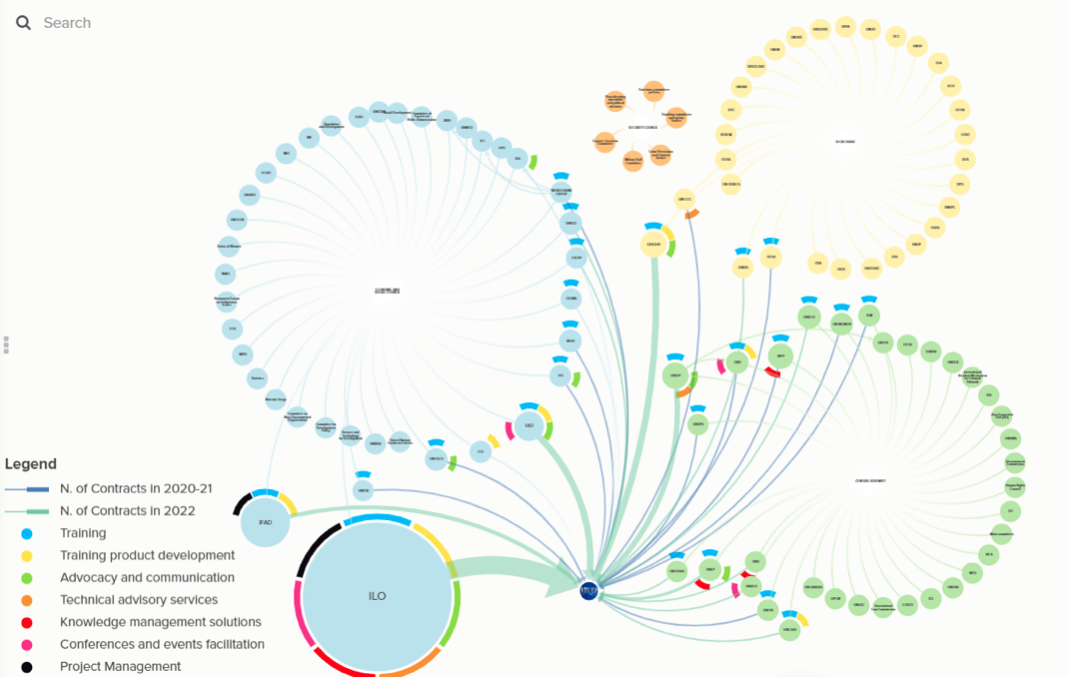Actor network mapping
Actor network mapping
Collecting, processing, and visualizing data for evidence-based decision making
In line with the common UN capacity development approach and firmly anchored under the ILO capacity development strategy, capacity development is understood by ITCILO as a process through which individuals, organizations and societies obtain, strengthen and maintain the capabilities to set and achieve their own development objectives over time. Capacity development may involve technical capacities (in such fields as employment, social security and health) and functional capacities (such as leadership, financial management, partnership and relationship building) and it may be implemented in several ways. While training is a common factor, capacity development can also be achieved through learning by doing, fostering relationships and partnerships, supporting research and knowledge-sharing, participation in communities of practice, South-South learning initiatives, on-the-job training, and other learning techniques that empower individuals and institutions to take charge of development challenges.
The ITCILO capacity development approach goes on distinguish three mutually reinforcing and interdependent levels of capacity development: individual, organizational, and resulting from the enabling environment. The first means increasing the skills and abilities of individuals; the second focuses on increasing the capacity of organizations to fulfil their mandates; and the third involves improvements in policies, legislation, regulations, labour market institutions, and societal systems.
Three intervention levels for capacity-development support

This systemic approach to capacity development calls for complexity thinking, tracking relationships among multiple actors including across system levels. For this purpose, large amounts of data need to be collected, processed and visualized. The knowledge management services of the Centre are meant to address this challenge and strengthen the capacity of its partners to manage big data packages for evidence-based decision making. One of these service packages focuses on actor network mapping supported by a cloud-based software application.
The ITCILO actor network mapping approach takes inspiration from Actor Network Theory, here with emphasis interaction between human actors constituting social systems. In a nutshell, the people constituting the reference system are analyzed in the context of their network of relationships. The reference system can be people in a single organization or networks of organizations; in the latter case, the people are effectively ‘enclosed’ in organizations speaking on their behalf.
A closer look at the ITCILO actor network mapping approach
The ITCILO actor network mapping approach shifts analytical focus away from single actors towards connectors, and sheds light on the quantity and the quality of the relationships between system constituents. During a three-day design sprint that combines plenary sessions with group work, individual exercises and simulations and that can be delivered face-to-face, online or in virtual reality, clients are guided step-by-step to create their own network maps; for more background information on design thinking and the ITCILO design thinking training kit go to https://readymag.com/ITCILO/1344523/. The following questions are answered as part of the design thinking process:
- What’s in scope? Actor network terminology, determination of system boundaries
- What is the expected outcome? Clarifying expectations vis-à-vis future network effectiveness
- How do we measure progress? Indicators and performance targets to monitor network performance
- How are we going to do this? The how-to of building actor network maps, here using a cloud-based software application
- When will the map be ready and what are the costs of ownership? Implementation plans and activity budgets.
The network application used by ITCILO is Kumu (www.kumu.io), a freeware software package to map social systems, and more in particular to visualize and analyze relationships between actors. Kumu can be used for stakeholder mapping to explore the web of loyalties, interests, influence, and alignment of key players around important issues. Kumu allows to capture the structure of both personal and institutional networks and to reveal key players.. Viewers can zoom into the map, and analyze both actors and connectors individually or in groups. The data to generate the map can be entered centrally or by directly by actors and maps are updated in real-time, allowing to monitor change as it happens. Data can be entered with the help of simple excel sheets, a CSV file or Google Sheets.
By the end of the design sprint, clients will have developed their own draft network maps. On request, ITCILO can provide follow-up advisory services to collect and prepare the data sets, to further elaborate the map with advanced functions and to further strengthen the institutional capacity to effectively use the application.
Example of an actor network map
Segment-specific partnership development
Partnership development is a strategic means of ITCILO to boost outreach and impact of its capacity development initiatives. In order to structure and guide its partnership development initiatives, ITCILO segments the universe of stakeholders into groups of organizations sharing distinct characteristics and analyzes each segment in the context of its network of institutional relationships. The information is used to determine tailored outreach campaigns for prospects and serves as a baseline to monitor changes in network performance over time.
Development partners in the United Nations Systems are considered a distinct segment in the ITCILO stakeholder universe. Illustrated below is the actor network for UN development partners maintained by ITCILO. UN agencies are clustered and coloured by Principal organs. ITCILO connections to other UN agencies denote the existence of an agreement. The size of the element denotes the volume of financial commitment and the strength of the connector shows the number of agreements. The colour of the connector indicates whether the agreement is current. The labelling of entities (the coloured arc) shows the type of services procured from ITCILO.
Snapshot of the ITCILO - UN partnership network map

The map shows that ILO is the main UN partner, followed by a series of other UN agencies linked to several Principal Organs. The majority of the partners procure training from ITCILO, followed by event and conference facilitation services, consultancies and knowledge management solutions. Some of these agencies have strong connectors to ITCILO supported by substantial and current agreements but there is room for further development of the network.